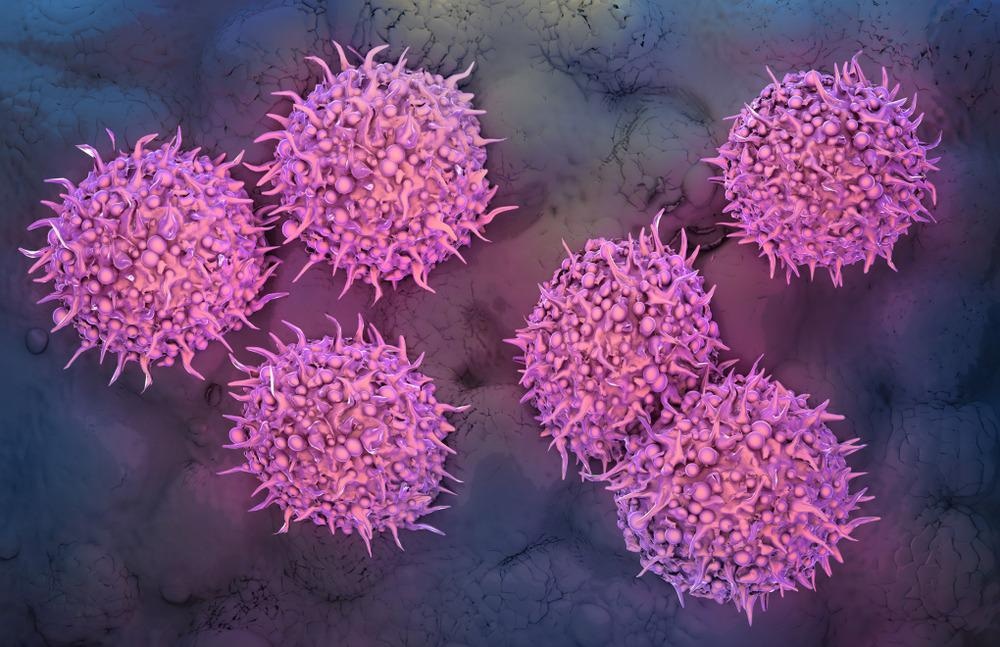The use of graphene oxide in biomedicine has become of great interest for researchers in many fields, including those who have utilized the unique compound for supporting induced pluripotent stem cell culture (iPSCs) and differentiation. This article will evaluate the role graphene oxide plays in iPSCs and the risks attached to this novel application.

Image Credit: Microgen/Shutterstock.com
Graphene oxide (GO), the oxidized form of graphene, is a novel carbon compound that was discovered in 2004 by Andre Geim and Kostya Novoselov. Graphene oxide is considered to be a unique material that consists of a single atomic layer of oxidized graphite, which is readily available and cost-efficient, making it attractive for several applications.
Graphene oxide can be seen as a unique material that has garnered popularity over recent years due to its low cost and high availability, enabling it to be used as a raw material for large-scale production of graphene after undergoing a reduction process.
However, 2D graphene oxide itself has also become a desirable material, which can be used in applications such as electric devices, gas separation and biomedical research.
Stem Cell Research
Within stem cell research, GO can be beneficial for expansion and differentiation into germ layers, as well as other lineages.
Properties such as having a large surface area, excellent physical and chemical properties, as well as composition versatility with other materials through effective surface functionalization, enable GO to be a desirable compound.
Pluripotent stem cells have become a promising resource for tissue-specific progenitor cells which can be used for regenerative medicine and drug testing.
Graphene oxide has been shown to enhance the differentiation of embryonic stem cells within mice to primitive and hematopoietic cells; this compound was shown to also aid with the differentiation of human embryonic stem cells into blood cells.
iPSCs, or induced pluripotent stem cells, can be made to have pluripotency from somatic cells which have had exposure to reprogramming factors.
This can provide an ethical alternative for stem cells, which is significant due to the previous standard that requires the destruction of embryos.
This ethical source of stem cells can remain in an undifferentiated state but also has the capacity to differentiate into cells within the germ layers. It also provides a promising opportunity for advancements in disease treatment, from Parkinson’s disease to sickle cell anemia.
The maintenance of pluripotency within iPSCs occurs through culturing these undifferentiated cells on feeder layer cells, such as mouse embryonic fibroblasts with the addition of certain cytokines.

3D medical illustration of pluripotent stem cells on a microscopic background. Image Credit: Mesa Studios/Shutterstock.com
However, research into iPSCs has also included graphene and graphene oxide substrates, which has suggested support in the culture of these cells, resulting in distinct cell proliferation and differentiation characteristics.
Early research on iPSCs, which were cultured on the GO surface, had been reported to have better adhesion and a faster proliferation rate when compared to the graphene substrate.
This research is significant as it illustrates the potential graphene oxide may have in aiding the advancement of iPSCs, which can be said to be the future of regenerative medicine and tissue engineering.
Risks of Using Graphene Oxide
However, while graphene oxide can have many versatile benefits, the risk of using this novel compound also requires evaluation to understand the realistic potential of its use within iPSCs.
Recent investigations into the toxicology of GO for use in stem cell research found levels of cytotoxicity associated with a high concentration of GO; this concentration-dependent cytotoxicity was also observed in human mesenchymal stem cells.
A study undertaken by Halim et al (2018) in Nanomaterials has reported the use of 2D graphene oxide, reduced graphene oxide and graphene and their influence on the differentiation of induced pluripotent stem cells.
The results suggested that the differentiation of iPSCs on the graphene substrate was inhibited while the differentiation of the iPSCs on graphene oxide was enhanced.
Factors That Influence Cytotoxicity
There are many factors that could influence the cytotoxicity level attached to using GO, such as the size, shape, concentration level, as well as functional groups on the surface.
The risk of GO can be seen through its effect on cells, due to its role in blocking the exchange of nutrients and oxygen which can lead to cell death.
The uptake of GO by living cells can cause toxicity as it accumulates in the cytoplasm and interferes with the natural working of the cell. Additionally, GO can also generate reactive oxygen species (ROS) which creates oxidative stress, apoptosis, and DNA damage in cells.
A high concentration of GO, such as 100 μg/ml, was observed by Heo et al. (2021), in the Journal of Hazardous Materials, to significantly decrease the viability of cells.
This team was able to support the cytotoxicity of GO with evidence of this carbon compound attaching to the plasma membrane and puncturing cells. Other researchers have also reported physical damage to the mitochondria, as well as directly impacting and damaging DNA.
When investigating the effect of GO on human iPSCs, Heo et al. (2021) had also uncovered that GO can inhibit cell proliferation and expansion by inducing cell death and reducing adhesive ability.
hiPSCs were found to have lost their phenotype due to the negative impact of GO, and illustrated a loss of pluripotency while beginning unwanted differentiation.
Significance of GO on Stem Cell Research
Understanding the toxicology aspect of graphene oxide on iPSCs can enable researchers to modify their use of the carbon compound and find an optimum level with maximum benefit and minimum cytotoxicity.
With only a few studies studying the effect of 2D graphene oxide in the form of suspension, the understanding of risks with using this carbon compound is limited.
However, this can be overcome with more research into this area, which would include investigating the effect of graphene oxide on different cell lines as well as within tissue scaffolding, and how to reduce the toxicity for optimum use.
Further research can enable the advancement of graphene oxide as well as iPSCs within both medicine and drug development, as well as regenerative tissue engineering.
This could be beneficial for treatment affecting tissue, as well as cells such as neurons or blood cells, which would drive research within pharmaceutical companies.
Once optimum levels of graphene oxide have been confirmed and cytotoxicity levels can be reduced, the use of GO within biomedicine can be limitless, from aiding in treating diseases to applications as an aptamer for cancer diagnoses.
Further Reading and References
Chen, G., Pang, D., Hwang, S., Tuan, H. and Hu, Y., 2012. A graphene-based platform for induced pluripotent stem cells culture and differentiation. Biomaterials, 33(2), pp.418-427. DOI: https://doi.org/10.1016/j.biomaterials.2011.09.071
Duran, M., Luzo, A., de Souza, J., Favaro, W., Garcia, P. and Duran, N., 2018. Graphene Oxide as Scaffolds for Stem Cells: An Overview. Current Molecular Medicine, 17(9), pp.619-626. DOI: https://doi.org/10.2174/1566524018666180308111915
Garcia-Alegria, E., Iliut, M., Stefanska, M., Silva, C., Heeg, S., Kimber, S., Kouskoff, V., Lacaud, G., Vijayaraghavan, A. and Batta, K., 2016. Graphene Oxide promotes embryonic stem cell differentiation to haematopoietic lineage. Scientific Reports, 6(1). DOI: https://doi.org/10.1038/srep25917
Halim, Alexander, Qing Luo, Yang Ju, and Guanbin Song. (2018). A Mini Review Focused on the Recent Applications of Graphene Oxide in Stem Cell Growth and Differentiation, Nanomaterials 8, no. 9: 736. https://doi.org/10.3390/nano8090736
Heo, J., Choi, J., Kim, J., Jeong, H., Choi, D., Han, U., Park, J., Park, H. and Hong, J., 2021. 2D graphene oxide particles induce unwanted loss in pluripotency and trigger early differentiation in human pluripotent stem cells. Journal of Hazardous Materials, 414, p.125472. DOI: https://doi.org/10.1016/j.jhazmat.2021.125472
Sekhon, S., Kaur, P., Kim, Y. and Sekhon, S., 2021. 2D graphene oxide–aptamer conjugate materials for cancer diagnosis. npj 2D Materials and Applications, 5(1). DOI: https://doi.org/10.1038/s41699-021-00202-7
Disclaimer: The views expressed here are those of the author expressed in their private capacity and do not necessarily represent the views of AZoM.com Limited T/A AZoNetwork the owner and operator of this website. This disclaimer forms part of the Terms and conditions of use of this website.